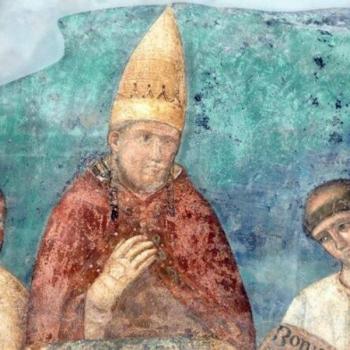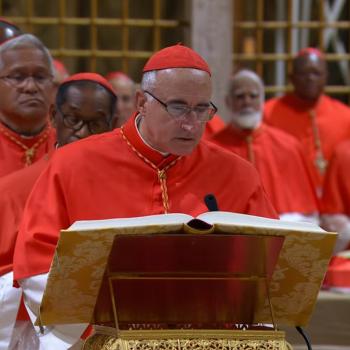The 2025 worldwide Jubilee, Pilgrims of Hope, was called by Pope Francis following the tradition established by Pope Boniface VIII in the year 1300 when he called the first Jubilee Year in the Catholic Church. Most current explanations I have read about the celebration of a Catholic Jubilee cite the Jewish practice of a Jubilee as described in the Book of Leviticus, but Pope Boniface is rarely (if ever) mentioned. I traveled to Rome at the opening of the Jubilee Year in the very end of December 2024, and purposefully visited the fresco of Pope Boniface VIII declaring the first Jubilee Year which is at the cathedral of Rome, the Basilica of Saint John Lateran. There was no highlight of the significant rendering which is attributed to the great medieval artist Giotto. In the depiction, the Pope stands flanked by two attendants on the loggia he ordered built at the basilica to declare the Jubilee of 1300. Only if you read Latin, you can understand the inscription below the painting which states among other things, “Imago Iconica Bonifaci VIII Pont Max Iobelaeum Primum in Annum M CCC Indicentis.”
The mystery of Boniface VIII and the origin of Jubilee years is that historically, Boniface is a controversial Pope who brought about tremendous division in the Church. His Papacy began after he maneuvered the abdication of the hermit Pope Celestine V so he could become Pope, and ended with his arrest ordered by King Phillip IV of France, and his subsequent death after one month. Boniface’s successor moved the Papacy from Rome to Avignon, France, where Popes remained for about 100 years. The late 1300s saw the scandalous reality of two men claiming to be the legitimate Pope – one in Avignon and one in Rome, and eventually a third one claimed to be Pope in Pisa, Italy. The whole debacle ended in 1429 when Pope Martin V was elected to restore the Papacy in Rome. Among the reasons Pope Boniface VIII called the first Jubilee, was his desire to show his power and influence in Western Europe, but in the end, he caused profound division both in Europe and the Church.
Though the purpose of a Jubilee Year has been purified throughout the centuries, its origin provides a powerful opportunity for reflection, especially by considering the saying attributed to Saint Teresa of Avila, “God writes straight with crooked lines.” Despite human weakness and error, conflict and confusion, God has the ability to work through it all to achieve his purpose. The decision by Pope Boniface to call a Jubilee Year may not have had the purest intentions, but it provided the precedent for future moments of tremendous grace. Even in the first Jubilee Year in 1300, an estimated 200,000 pilgrims visited Rome, and the shrines of the city received much needed renovations. When we look within ourselves, by God’s grace, we have the ability to take the sins and mistakes our lives, repent, learn from them, and chart a better path forward. The Book of Proverbs states, “the human heart plans the way, but the Lord directs the steps” (Prov 16:9). This is the mystery of how God’s grace operates in the human heart.
Picture is mine, all rights reserved. Rome, January 2025.












